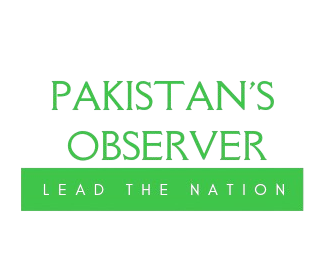By A.M. Malik
The unemployment crisis is deepening in Pakistan, where 6.1 million people are unemployed in 2024 and the younger generation is the most vulnerable. With traditional employment opportunities shrinking, digital platforms and online work opportunities are emerging as a solution to this crisis. This article highlights the latest statistics, causes, and innovative strategies against unemployment through online work.
Key figures for the year 2024
The national unemployment rate is 6.3% (which was 5.7% in 2023), while among young people (15-24 years), the rate is 12.5%.
Low unemployment: 30% of employees earn less than the minimum wage, especially in informal sectors such as agriculture and retail.
Skill shortage: Only 18% of graduates meet the requirements of the industry, leaving 1.5 million technical jobs vacant.
Gender gap: Women’s labor force participation is only 22% due to social barriers and limited access to education.
Causes of unemployment
The economic and structural problems
Slowing economic growth (2.9% in 2024), the industrial sector is unable to employ 1.2 million new job seekers every year.
Decline of agriculture:
Production has declined due to climate change and outdated practices, while the sector employs 38% of the workforce.
Lack of foreign investment:
500,000 potential jobs are lost annually due to political instability and the energy crisis.
The Impact of Technology
Automation threatens 15% of manufacturing jobs, while only 35% of people in villages use the internet.
Elimination of unemployment through online means.
Pakistan’s freelancing sector earned $400 million in 2024, which shows the potential of digital employment. Below are some practical solutions:
The benefits of global freelancing platforms
Opportunities exist in the areas of IT, design, and content creation on the best platforms: Upwork, Fiverr, and Toptal. Pakistani freelancers are ranked fourth in the world.
The government’s measures: The Freelancer Support Program (starting in 2023) is providing free training and PayPal access to 50,000 young people.
Preparing to work online
The development of skills: Focus on the following areas:
Digital marketing (25% growth per year).
Free courses like Programming (Python, JavaScript) are available on Coursera and DigiSkills.
Data Science: 10,000 Pakistanis are getting certified every month in partnership with Google and Microsoft.
Infrastructure: Broadband penetration in villages (currently 53%) and co-working spaces to be expanded.
Promoting e-commerce and start-ups
Drawers and Shopify: Local entrepreneurs have created 200,000 jobs through online stores.
Incubators: The National Incubation Centre funded 500 startups, creating 15,000 jobs in fintech and edtechpolicy proposals.
Digital Literacy Campaign: IT courses to be included in schools and vocational centers.
Tax incentives: Freelancers earning less than $20,000 per year should be tax-exempt.
Public-private partnerships: Create remote job hubs with companies like Meta and Amazon.
Microfinancing: Freelancers should be given loans to buy laptops and internet packages.
Successful examples.
Ali Raza (Lahore) learned graphic design from YouTube and is now earning $3,000 a month on Fiverr.
Tech Valley: A Karachi-based startup that taught coding to women and provided remote jobs to 1,200 graduates.
Conclusion:
Pakistan’s unemployment crisis requires urgent action, but digital transformation offers a way out. By investing in online work infrastructure and education, Pakistan can make its young population an economic asset. As the World Bank says, “every 1% increase in digital access increases employment by 2.5%.”The future of work is online – and Pakistan must seize the opportunity.










